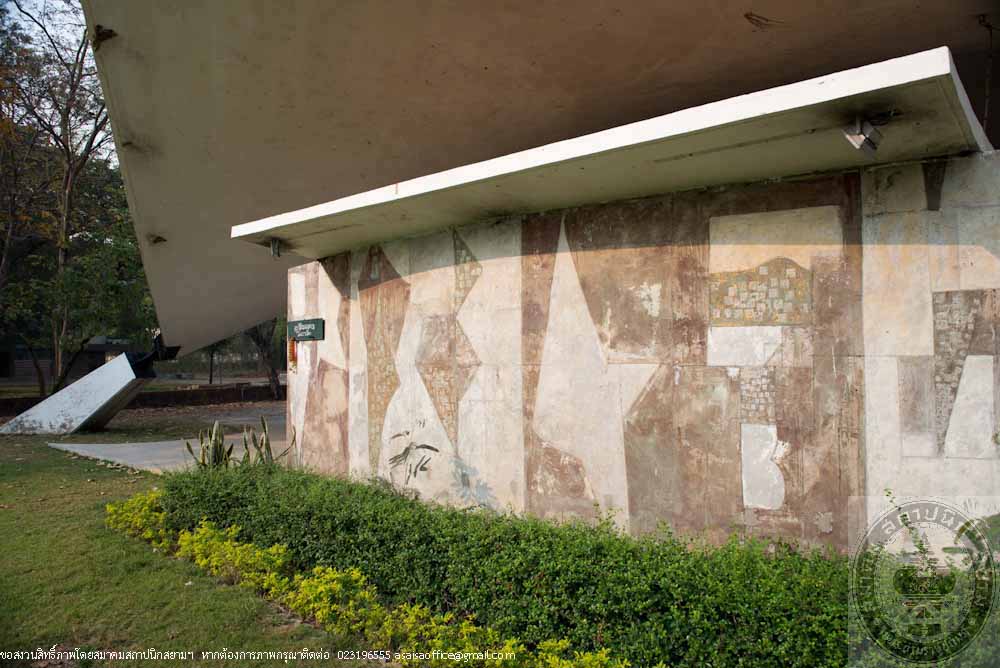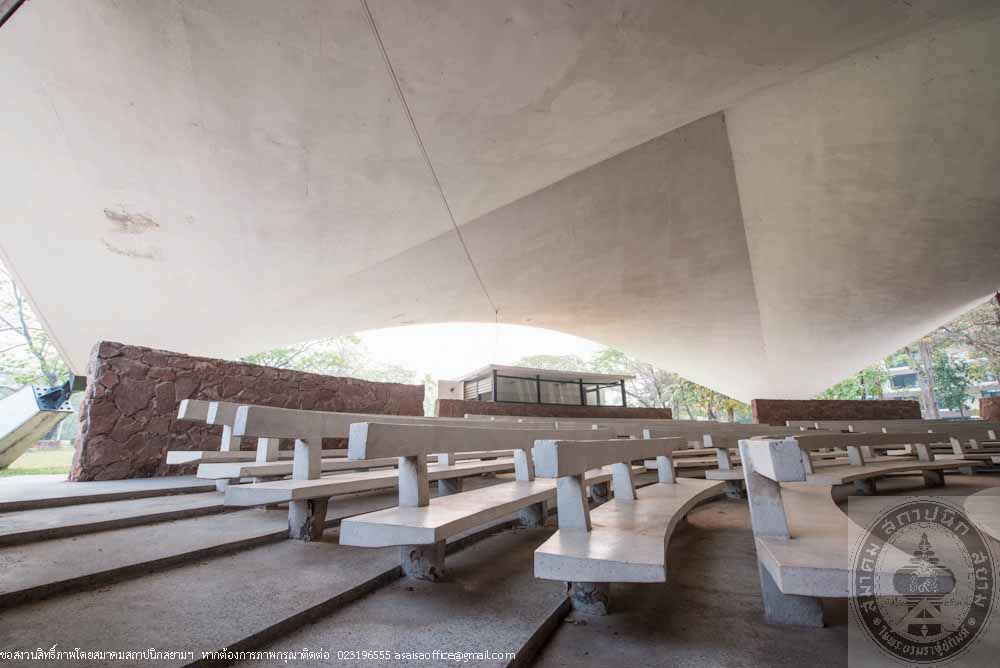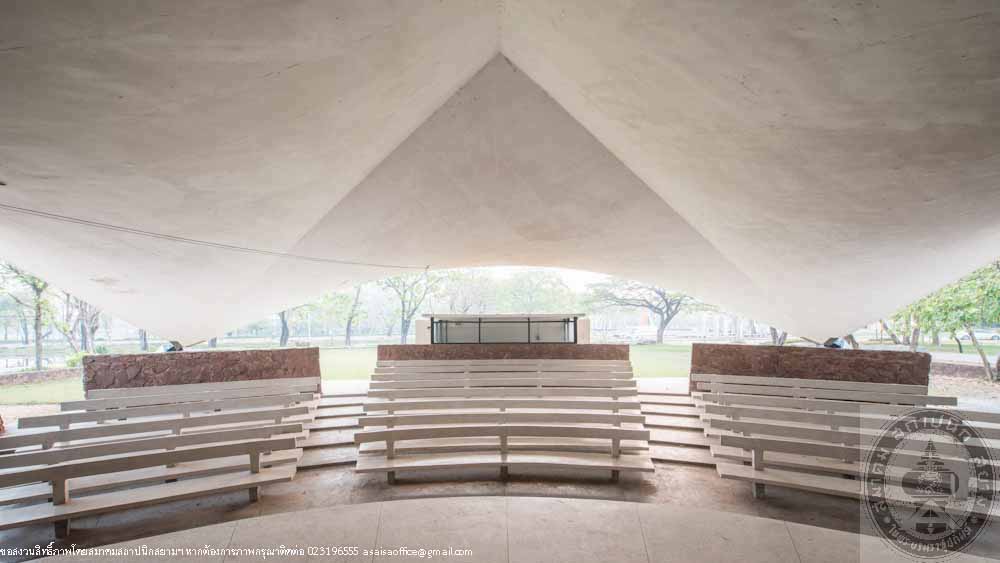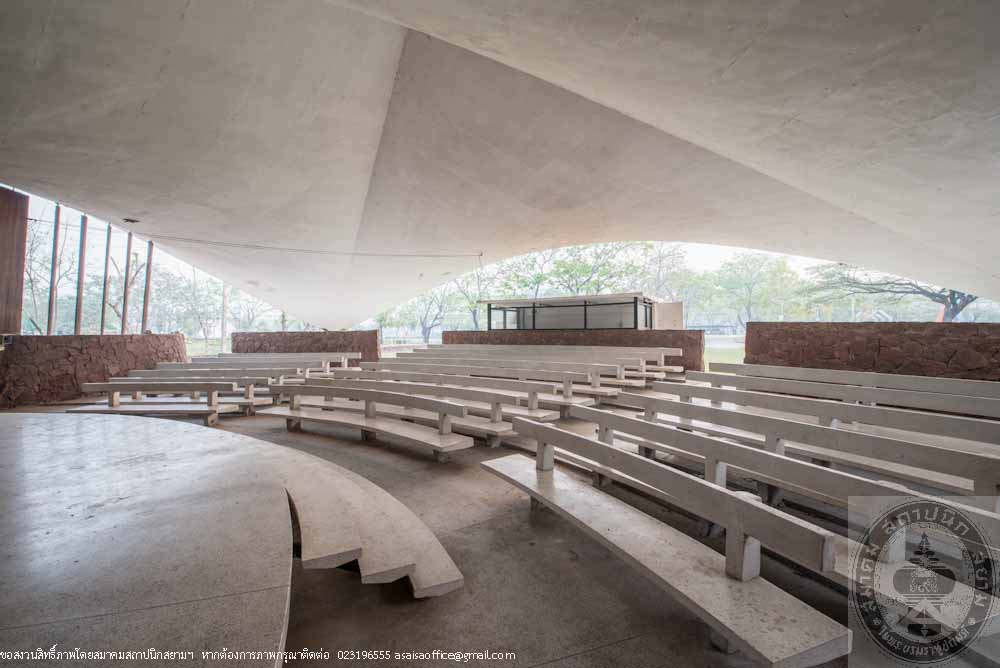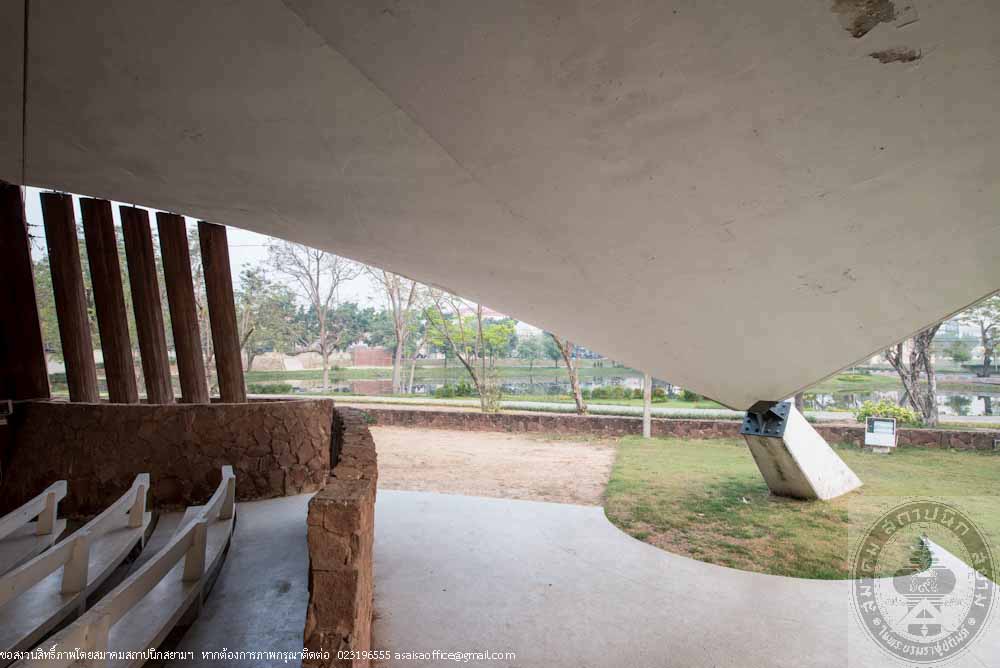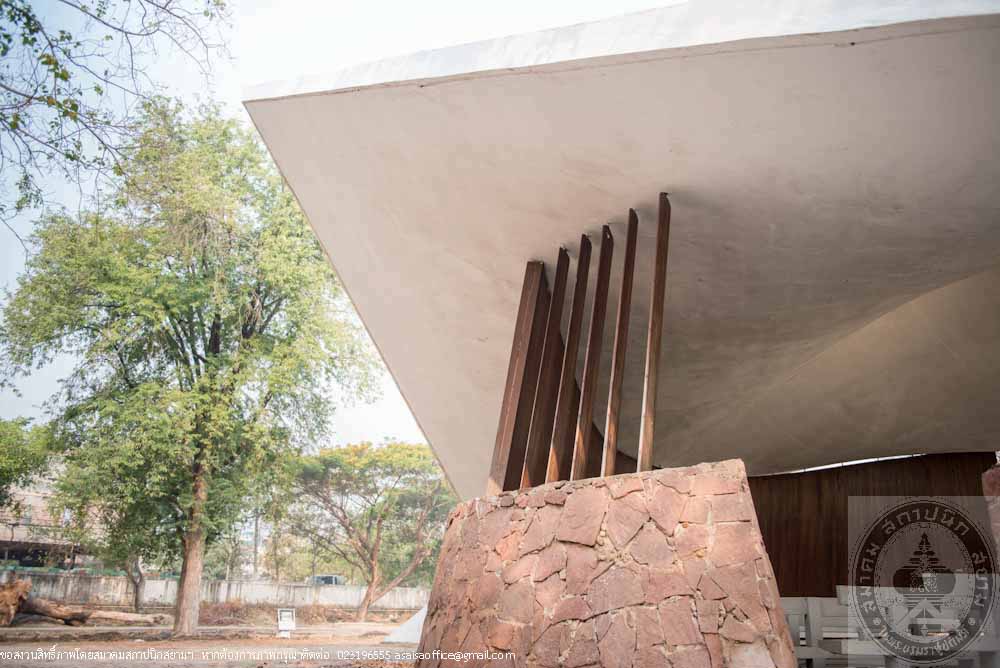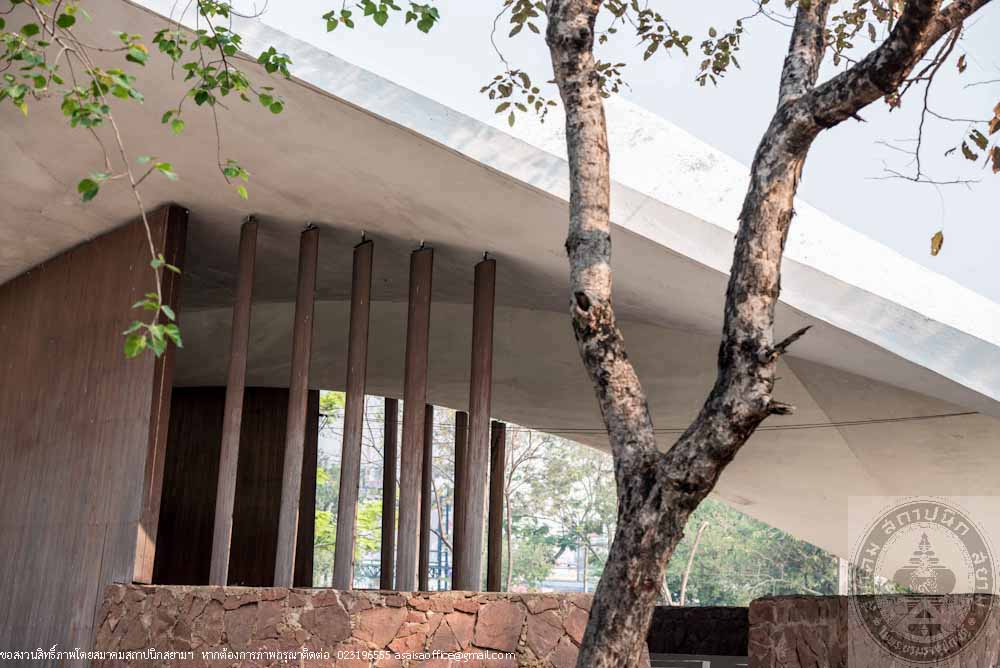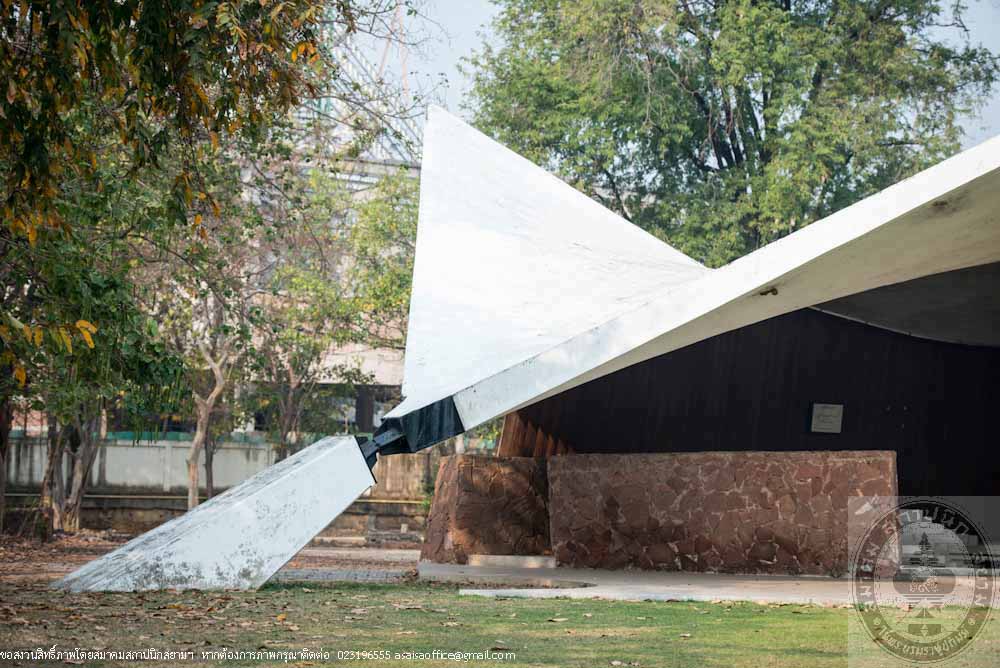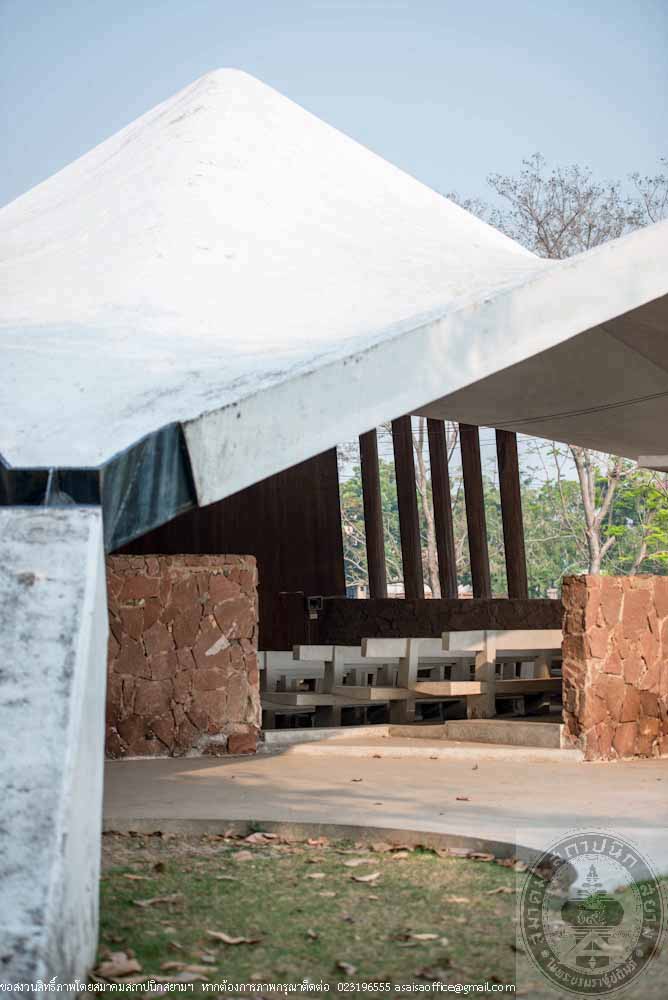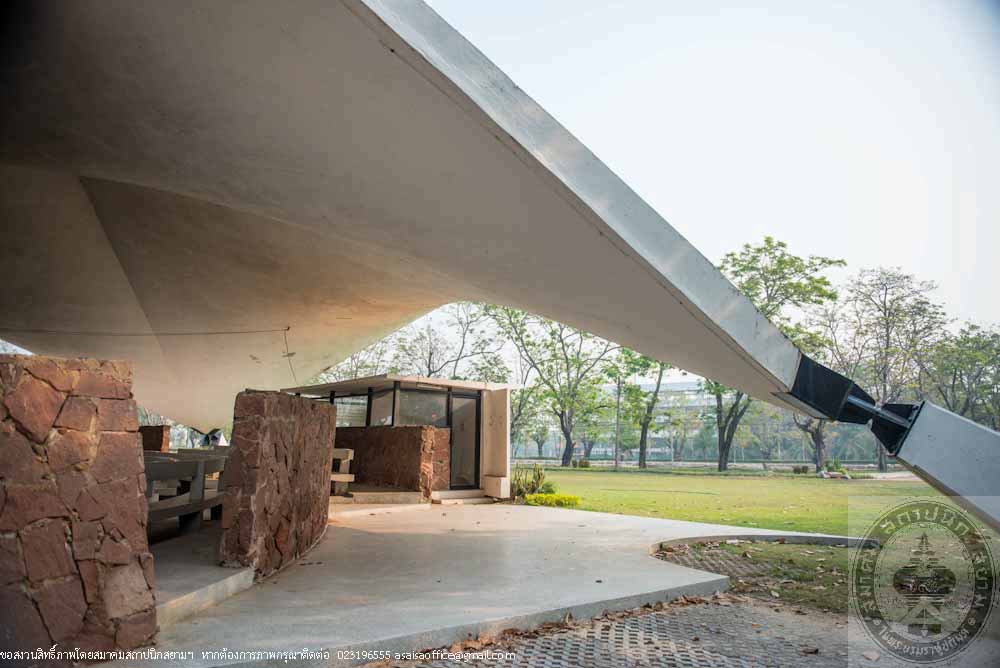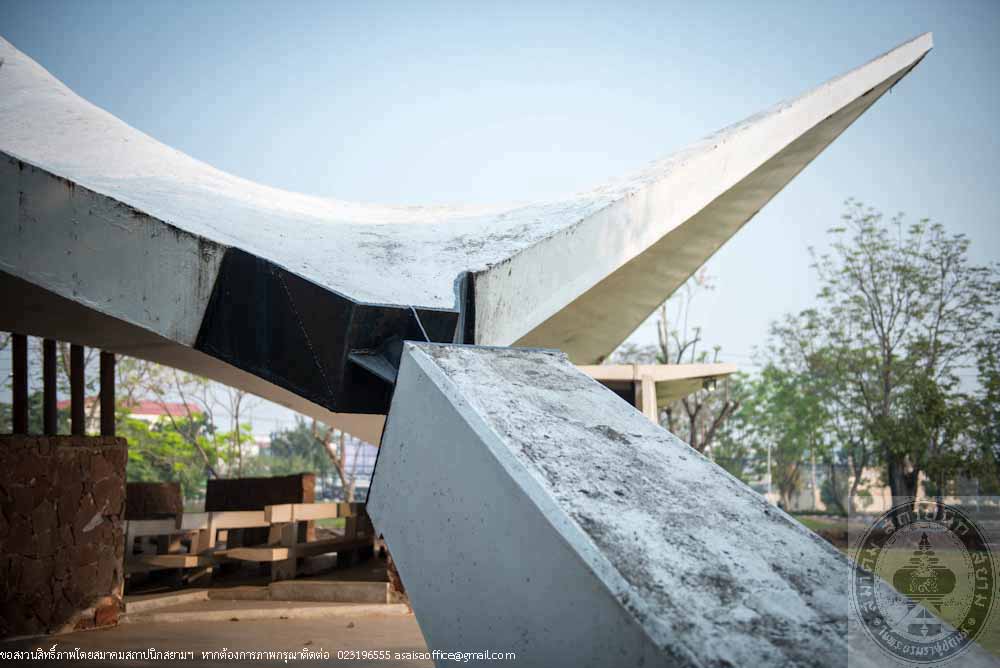พิพิธภัณฑ์เรือนหมอพร
อ่านเพิ่มเติม
พิพิธภัณฑ์เรือนหมอพร
- ที่ตั้ง มหาวิทยาลัยเทคโนโลยีราชมงคลพระนคร วิทยาเขตพณิชยการพระนคร เลขที่ 86 ถนนพิษณุโลก แขวงสวนจิตรลดา เขตดุสิต กรุงเทพมหานคร
- สถาปนิก/ผู้ออกแบบ ไม่ปรากฏหลักฐาน
- ผู้ครอบครอง มหาวิทยาลัยเทคโนโลยีราชมงคลพระนคร วิทยาเขตพณิชยการพระนคร
- ปีที่สร้าง สมัยรัชกาลที่ 5 พิพิธภัณฑ์เรือนหมอพร
ประวัติ
ตั้งอยู่ภายในมหาวิทยาลัยเทคโนโลยีราชมงคลพระนคร วิทยาเขตพณิชยการพระนคร เดิมเป็นส่วนหนึ่งของวังพลเรือเอกพระเจ้าบรมวงศ์เธอพระองค์เจ้าอาภากรเกียรติวงศ์กรมหลวงชุมพรเขตอุดมศักดิ์ (วังนางเลิ้ง) ซึ่งได้รับพระราชทานจากพระบาทสมเด็จพระจุลจอมเกล้าเจ้าอยู่หัว หลังจากกรมหลวงชุมพรเขตอุดมศักดิ์ได้กราบบังคมทูลลาออกจากราชการ พระองค์ได้ศึกษาวิชาแพทย์แผนโบราณจนชำนาญ และรับรักษาโรคให้ประชาชนทั่วไปโดยไม่คิดค่ารักษา พระองค์จึงถูกเรียกขานในอีกชื่อหนึ่งว่า “หมอพร” ต่อมาพระองค์ทรงกลับเขารับราชการอีกครั้งและสิ้นพระชนม์ในพุทธศักราช 2466 ที่จังหวัดชุมพรหลังจากนั้น ในพุทธศักราช 2479 กรมอาชีวศึกษาได้ขอซื้อที่ดินพร้อมบ้านเรือนไม้สองชั้นจำนวนสองหลังจากผู้ครอบครองต่อจากกรมหลวงชุมพรเขตอุดมศักดิ์ คือ หม่อมเมี้ยน อาภากร ณ อยุธยา และหม่อมเจ้ารุจยากรอาภากร ณ อยุธยา เพื่อขยายอาณาเขตของโรงเรียนพณิชยการพระนครในขณะนั้น ต่อมาทางโรงเรียนได้รื้อ เรือนไม้สองชั้นของหม่อมเจ้ารุจยากรลง โดยคงเหลือไว้เพียงเรือนไม้สองชั้นหม่อมเมี้ยนแล้วใช้เป็นร้านสหกรณ์จนกระทั่งในวันที่ 19 ธันวาคม พุทธศักราช 2519 พระบาทสมเด็จพระเจ้าอยู่หัวได้ทรงพระกรุณาเสด็จฯ ทรงเป็นประธานในพิธีเปิดพระอนุสาวรีย์กรมหลวงชุมพรเขตอุดมศักดิ์ และได้มีรับสั่งถามว่า “ยังมีสิ่งใดที่ในสมัยเป็นวังหลงเหลืออยู่บ้าง” ศาสตราจารย์ธรรมนูญ อัคคพานิช ผู้อำนวยการ
ในขณะนั้น ได้กราบบังคมทูลพระกรุณาว่า“ยังมีเรือนหลังหนึ่งอยู่” มีพระราชกระแสว่า “ให้อนุรักษ์ไว้” ซึ่งก็คือ “เรือนหม่อมเมี้ยน”นั่นเอง ในระยะเวลาต่อมามหาวิทยาลัย ได้ใช้เรือนหม่อมเมี้ยนเป็นเรือนพยาบาล และตั้งชื่อว่า “เรือนหมอพร”ซึ่งมาจาก พระนามของกรมหลวงชุมพรฯ ต่อมาเรือนหมอพรมีสภาพทรุดโทรมลง และในพุทธศักราช 2552 หลังจากมีมติเห็นชอบจาก กรมศิลปากร อนุญาตให้มีการก่อสร้างอาคารอเนกประสงค์และอนุรักษ์เรือนหมอพรด้วยวิธีการย้ายที่ตั้ง (relocation) โดยไม่มีการรื้อตัวเรือน มาอยู่ในตำแหน่งบริเวณสนามหญ้าด้านในพื้นที่โอบล้อมของตึก 1 และมีการลงเสาเข็มเพื่อรองรับตัวเรือนอีกด้วย หลังจากนั้นผู้ที่มีส่วนเกี่ยวข้องได้บูรณปฏิสังขรณ์เป็น “พิพิธภัณฑ์เรือนหมอพร” ภายในอาคารได้จัดแสดงสิ่งของต่างๆ ในหมวดเครื่องใช้ประจำพระองค์ ได้แก่ ฉลองพระองค์ทหารเรือ พระมาลา อินทรธนู หีบเหล็กสำหรับเก็บข้าวของเครื่องใช้ชิ้นเล็กชิ้นน้อย กี๋ (ถาดไม้วางถ้วยชาม) หมวดเครื่องแพทย์ ได้แก่ ที่ปั๊มยา เครื่องบดยาหินบดยาพร้อมลูกบิดตะแกรงร่อนยา หูฟัง อับแก้วเจียระไน โกร่งบดยาขนาดใหญ่ โกร่งราง รวมทั้งภาพถ่ายต่างๆ โดยสิ่งของทั้งหลายเหล่านี้ได้รับการบริจาคจากผู้เคารพศรัทธาพระองค์ท่านเกือบทั้งสิ้น
พิพิธภัณฑ์เรือนหมอพรเป็นตัวอย่างที่ดีของการอนุรักษ์ด้วยวิธีการย้ายที่ตั้ง นอกจากผู้เข้าชมอาคารจะได้เรียนรู้เกี่ยวกับพระราชประวัติและพระราชกรณียกิจของกรมหลวงชุมพรฯ แล้ว ยังได้ชื่นชมตัวเรือน ซึ่งเป็นบ้านพักอาศัยไม้สองชั้นลักษณะทางสถาปัตยกรรมแบบนีโอ–คลาสสิก (Neo–Classic) ที่มีการดัดแปลงให้เข้ากับภูมิอากาศในเขตร้อนชื้นของไทย ลักษณะเรือนแบบนี้เริ่มแพร่หลายเข้ามาในสมัยพระบาทสมเด็จพระจุลจอมเกล้าเจ้าอยู่หัว และเป็นที่นิยมสร้างกันในหมู่คหบดีขุนนางและชนชั้นกลางทั่วไปอีกด้วย
Ruan Mo Phon Museum, Rajamangala University of Technology Phra Nakhon
- Location Rajamangala University of Technology Phra Nakhon 86 Pitsanulok Road, Kwang Suan Chitralada, Dusit, Bangkok
- Architect/Designer Unknown
- Owner Rajamangala University of Technology Phra Nakhon Year Built During the reign of King Rama V
History
Ruan Mor Phon Museum, located within the compound of Rajamangala University of Technology Phra Nakhon, was once part of the residence of Admiral Prince Abhakara Kiartivongse, Prince of Chumphon (Nang Loeng Palace) which was granted to him by King Rama V. Following his resignation, he studied traditional medicines and provided free medical treatment to all people. As a result, he was also otherwise known as “Doctor Phon.” He later went back to serve and passed away in 1923 in Chumphon. In 1936, Department of Vocational Education purchased the land with the 2 two-storey wooden houses from Lady Mian Abhakara na Ayutthaya and Momchao Rujyakara Abhakara na Ayutthaya, the owners after Prince Abhakara Kiartivongse, in order to expand the facilities of then Panichyakarn Phra Nakorn College. The college later demolished the two storey wooden mansion that belonged to Mom Chao Rujyakara while keeping the other Lady Mian’s two storey mansion and later converted it into a co-op store. Until 1976 when His Majesty King Rama V visited the college in the opening ceremony of Prince Abhakara Kiartivongse’s monument, the king asked, “Was there anything left that used to be a part of the palace?” Professor Thammanoon Akkapanich, the director at the time replied, “There was a mansion.” The King then responded, “You may preserve it.” And there it was “Ruan Mom Mian.”
The University converted Ruan Mom Mian into a medical facility and named it “Ruan Mor Phon” after the nickname of the Prince of Chumphon. Ruan Mor Phon began to deteriorate when in 2009 Department of Fine Arts agreed to grant permit to build a multipurpose facility and preserve Ruan Mor Phon. With a relocation technique, no disassemble required, the mansion was relocated to the lawn area surrounded by Building 1 and was placed on a pile foundation to secure the house. The mansion was restored into “Ruan Mor Phon Museum” that houses a collection of the prince’s personal items such as his naval uniforms, hats, epaulets, iron chest for storing small items, wooden tray for plates. There were also the collections of traditional medical tools that include a pill press, a stone mortar with a stone pestle, a medicine strainer, stethoscope, a cut glass casket, a large mortar, a boat-shaped grinder and some photographs. Almost all of the items displayed were donated by those who revere him.
Ruan Mor Phon Museum is a great example of applying the relocation technique in preserving the old house. Visitors to the museum will get to learn not only about the life and work of the Prince of Chumphon, but will also get to admire the two storey wood frame house with Neo-Classical architecture that has been adapted to Thailand’s tropical climate. This architectural style prevailed during the reign of King Rama V and became popular among the rich, noblemen and middle class people in general.
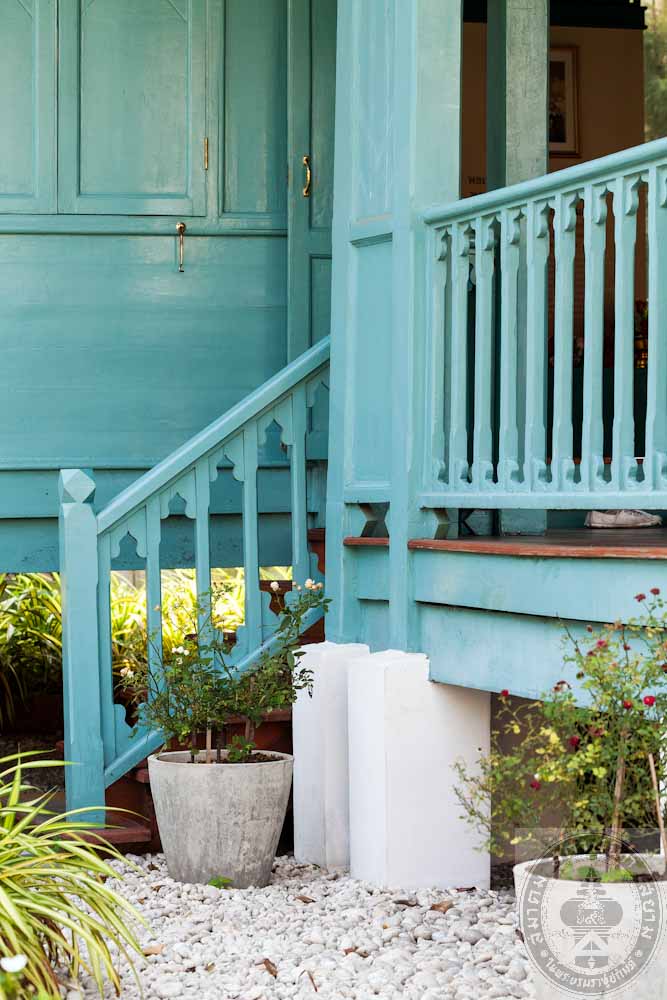
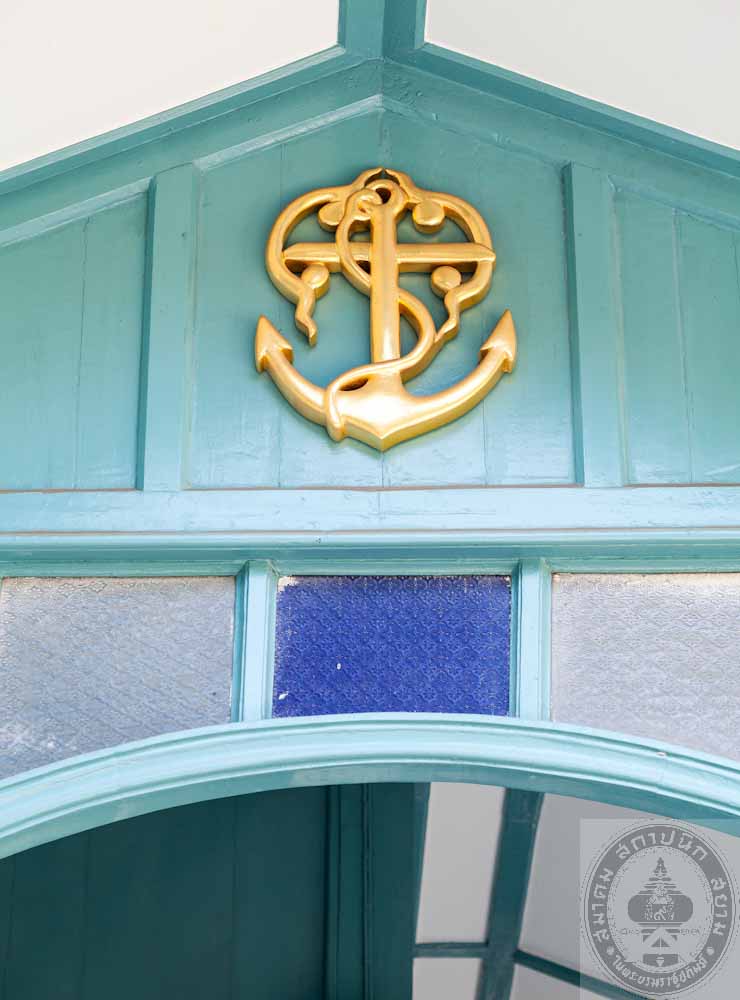
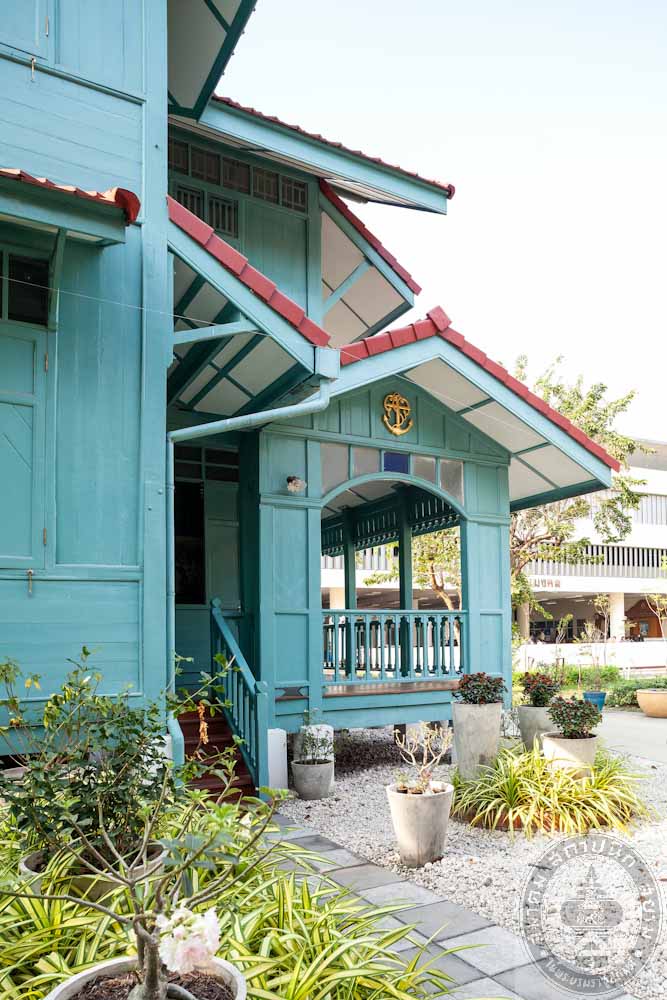
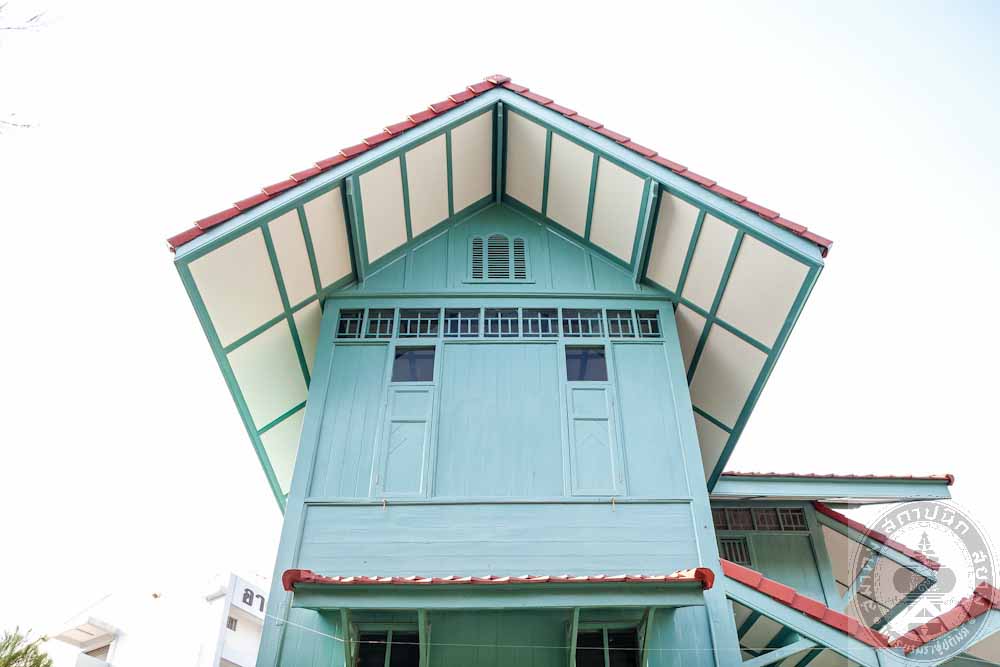
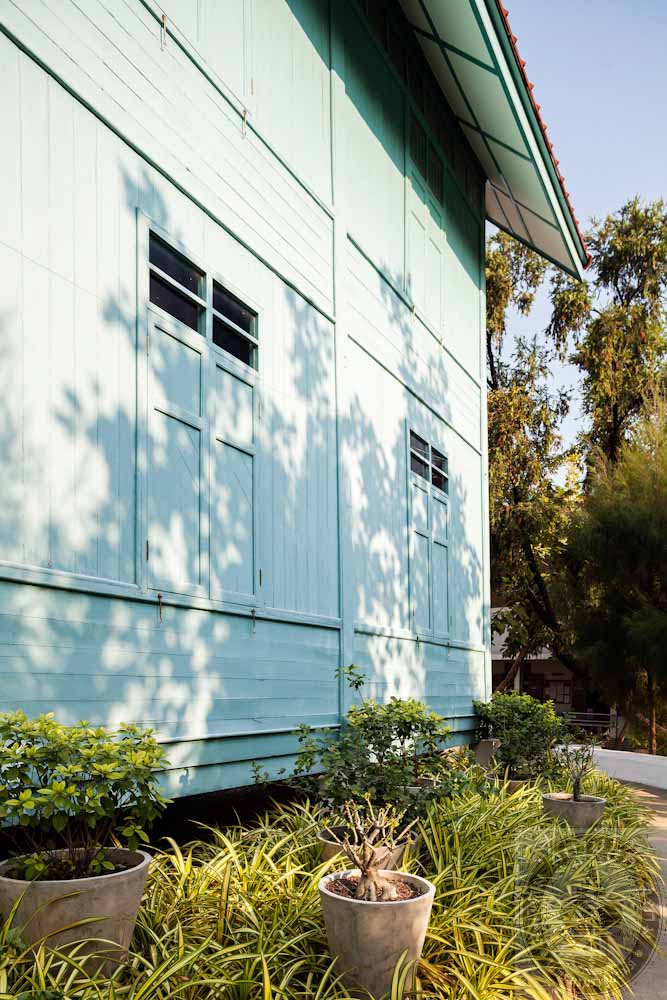
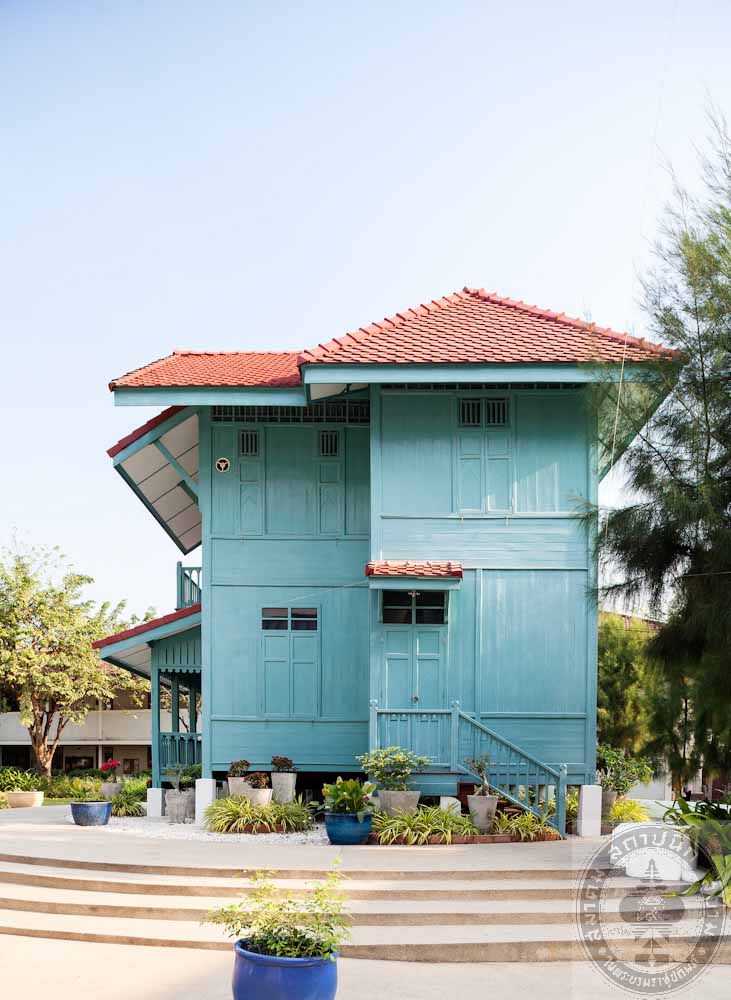
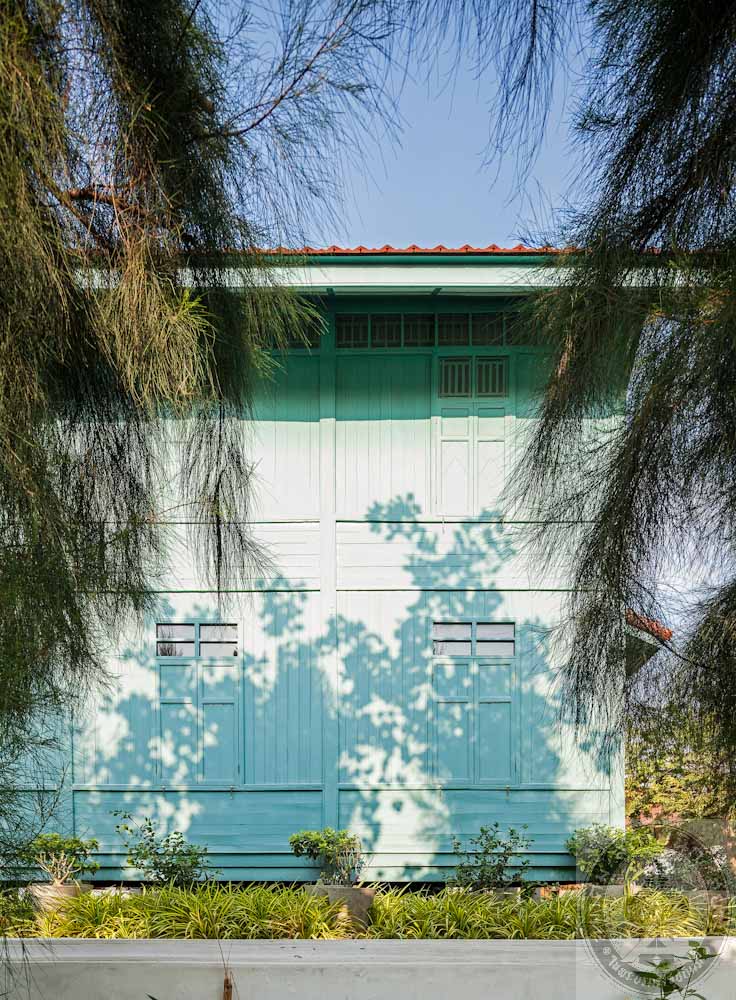
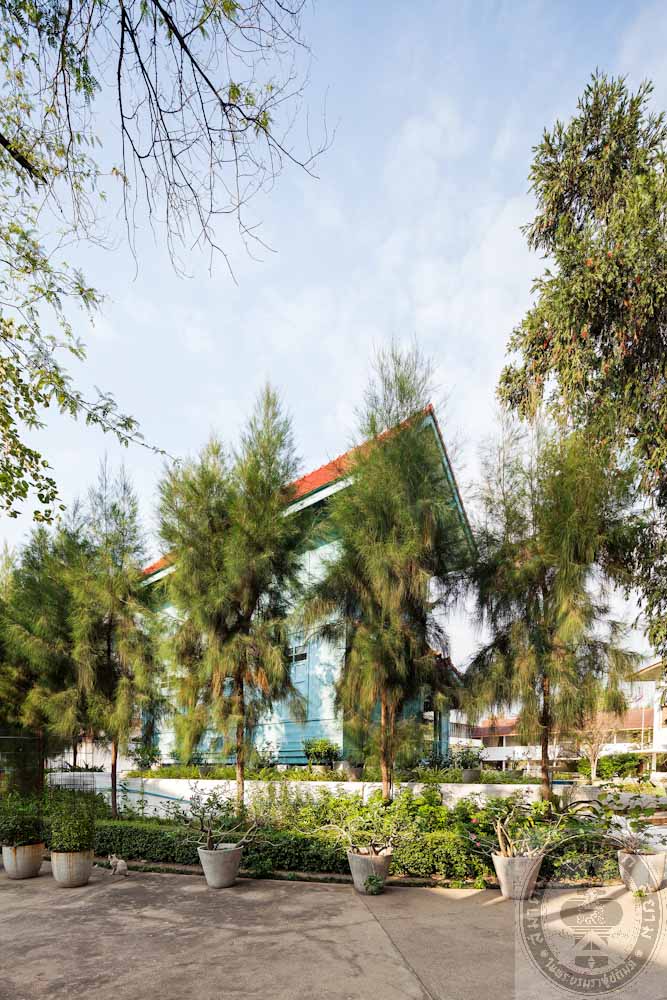
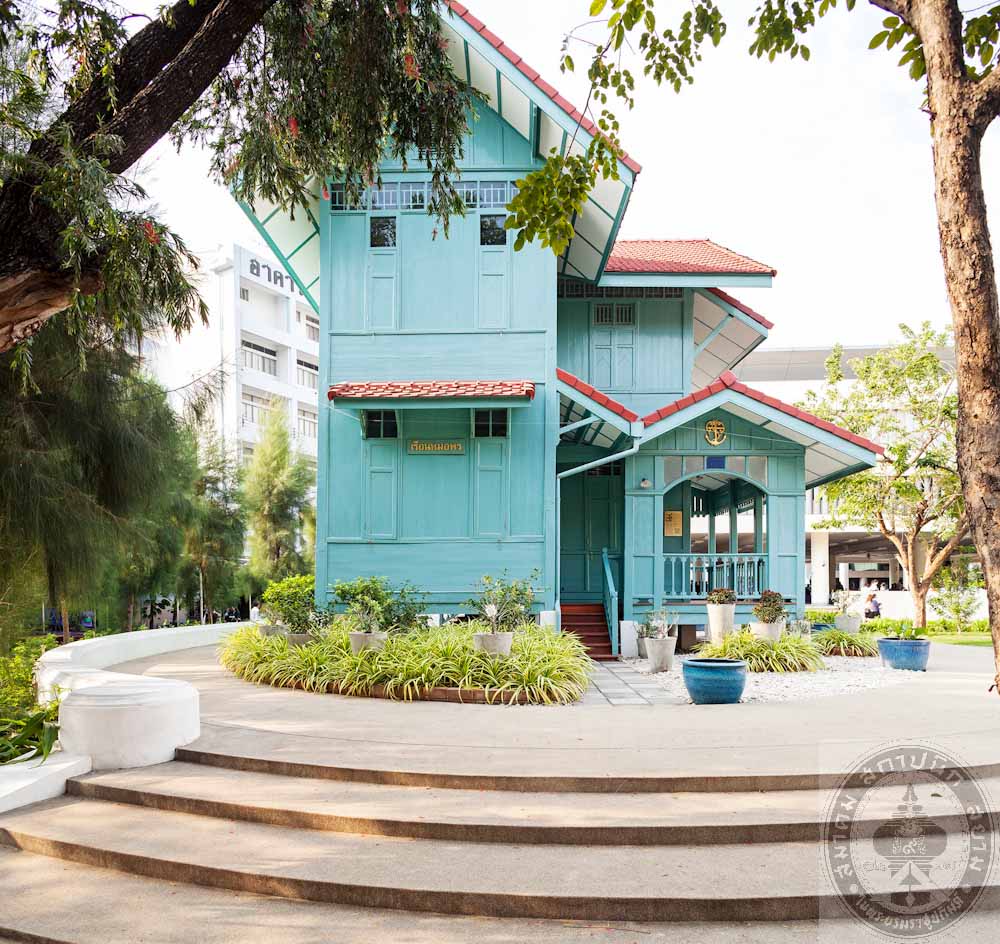
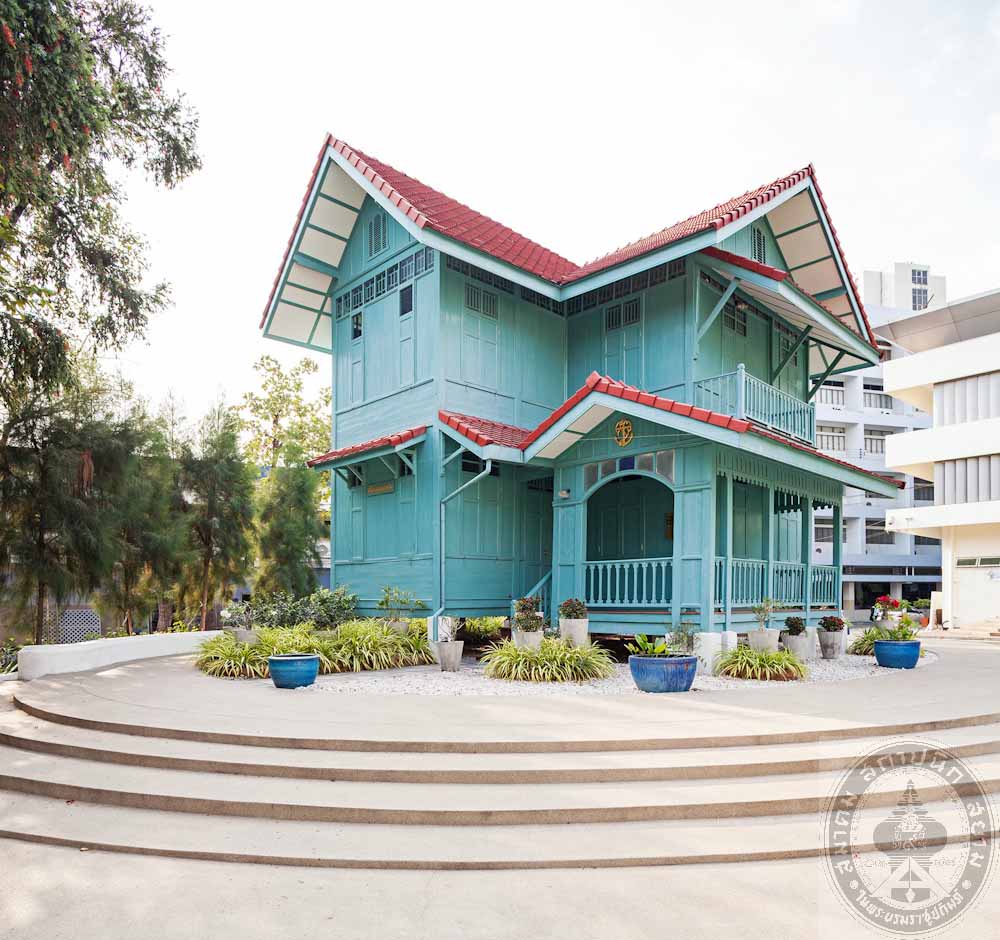
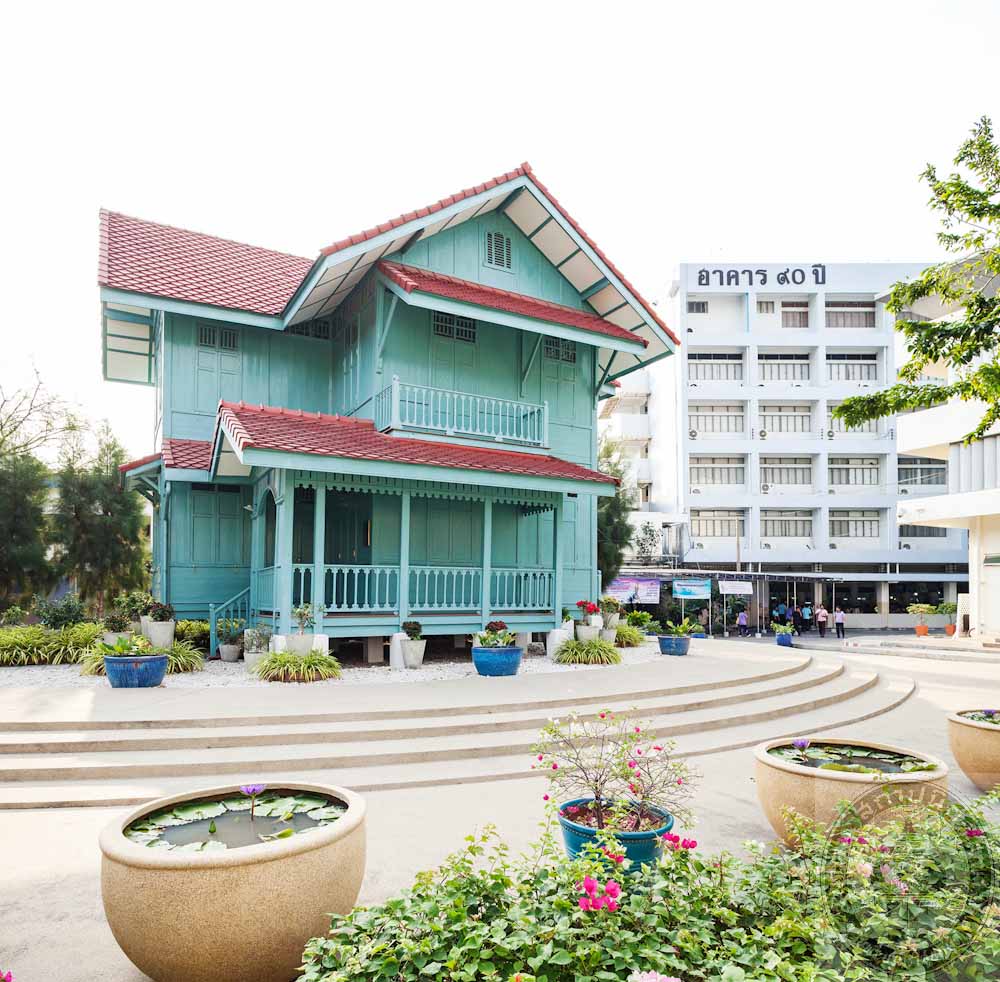
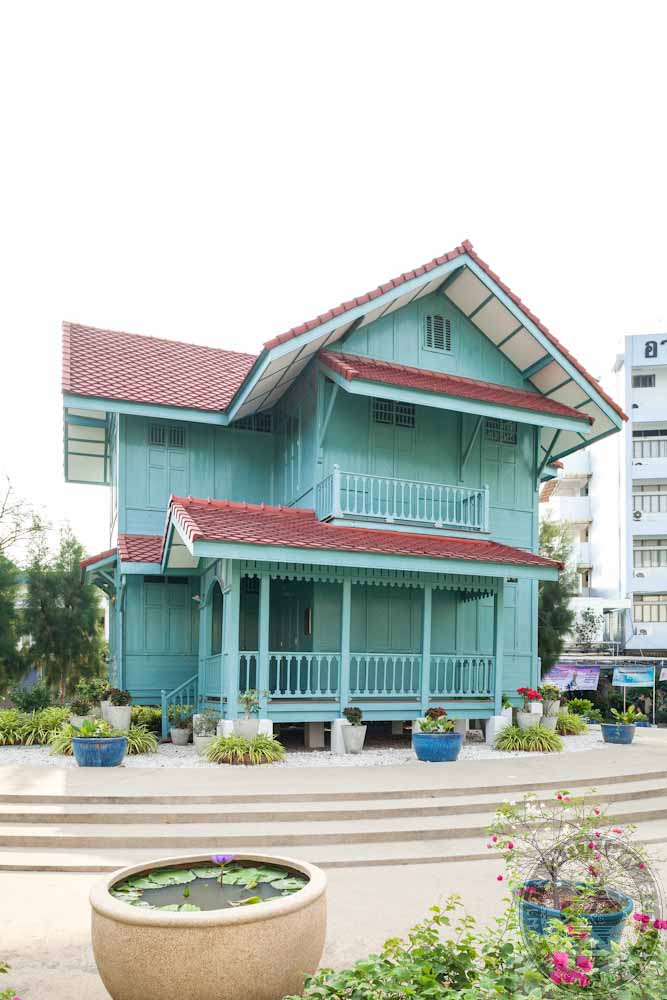
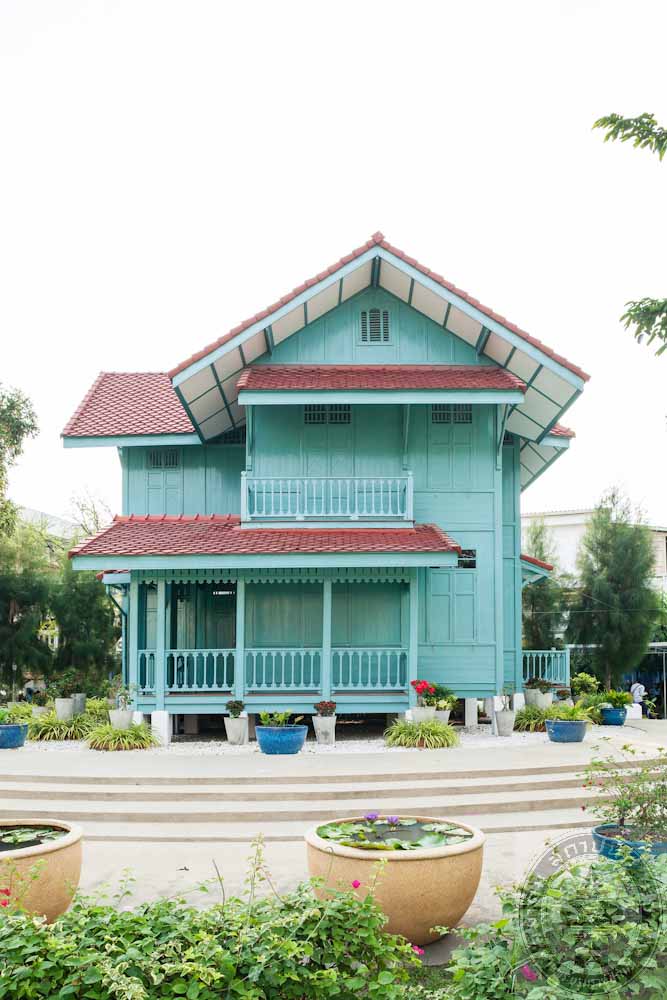
อาคารคุรุสัมมนาคาร มหาวิทยาลัยเทคโนโลยีราชมงคลอีสาน
อ่านเพิ่มเติม
อาคารคุรุสัมมนาคาร มหาวิทยาลัยเทคโนโลยีราชมงคลอีสาน
- ที่ตั้ง เลขที่ 744 ถนนสุรนารายณ์ ตำบลในเมือง อำเภอเมือง จังหวัดนครราชสีมา
- สถาปนิก/ผู้ออกแบบ ดร.วทัญญู ณ ถลาง และนคร ศรีวิจารณ์
- ผู้ครอบครอง มหาวิทยาลัยเทคโนโลยีราชมงคลอีสาน
- ปีที่สร้าง พุทธศักราช 2503
ประวัติ
อาคารคุรุสัมมนาคาร ได้ก่อสร้างขึ้นภายหลังจากการก่อตั้งวิทยาลัยเทคนิคภาคตะวันออกเฉียงเหนือนครราชสีมา ราว 3 ปี โดยมีวัตถุประสงค์เพื่อใช้เป็นสถานที่สำหรับการจัดประชุมหรือจัดการแสดงและใช้รองรับคณาจารย์และนักศึกษาที่เปิดแผนกวิชาเพิ่มขึ้น ดำเนินการออกแบบโดยอาจารย์สถาปนิกยุคก่อตั้งวิทยาลัยฯ คืออาจารย์ ดร.วทัญญู ณ ถลาง ผู้อำนวยการวิทยาลัยฯ และอาจารย์นคร ศรีวิจารณ์ โดยมี ม.ร.ว. จาตุรีสาณ ชุมพลร่วมออกแบบโครงสร้าง และบริษัท วู ซี ยิน จำกัด ได้เป็นผู้รับเหมาก่อสร้างร่วมกับคณะนักศึกษาที่เป็นแรงงานสำคัญในการก่อสร้าง (วิทยาลัยเทคนิคภาคตะวันออกเฉียงเหนือ ในปัจจุบันได้ยกฐานะเป็น มหาวิทยาลัยเทคโนโลยีราชมงคลอีสาน)
อาคารคุรุสัมมนาคารเป็นอาคารโครงสร้างเปลือกแข็งบาง (Thin Shell) หลังคาเป็นคอนกรีตเสริมเหล็กชิ้นเดียวขนาดใหญ่ไม่มีรอยต่อ รูปทรงโค้งคล้ายอานม้า มีการเปลี่ยนถ่ายผิวคว่ำลงหรือที่เรียกว่า ไฮเพอบิริคพาลาโบลอยด์ (Hyperbolic Paraboloid) มุมมองจากด้านบนจะเห็นหลังคาเป็นแผ่นคอนกรีตสีขาวรูปหกเหลี่ยม ที่พับโดยสลับปลายของมุมขึ้น–ลง ปลายมุมที่โน้มปลายพุ่งลงสู่พื้นดินได้ถ่ายแรงจากแผ่นหลังคาคอนกรีตมาสู่จุดรับหลังคาที่เป็นเสาเอน 3 จุดค้ำยันไว้ และมีผนังก่อด้วยหินทรายเตี้ยๆ สร้างแนวขอบเขตระหว่างภายนอกและภายในของอาคาร เป็นตัวอย่างการออกแบบอาคารสมัยใหม่ (Modern Architecture) ที่ใช้การถ่ายเทอากาศภายในอาคารโดยการพึ่งพาธรรมชาติ (Natural Ventilation) ด้านหลังเวทีของห้องประชุมมีผนังไม้เนื้อแข็งสูงเป็นฉาก จากทางเข้ามีการลดระดับพื้นและที่นั่งลงไป โดยที่นั่งหน้าเวทีจะเป็นระดับต่ำที่สุด ซึ่งช่วยให้เกิดอรรถประโยชน์ในการใช้สอยและการป้องกันเสียงรบกวนจากภายนอกได้เป็นอย่างดี ตลอดระยะเวลาที่ผ่านมาอาคารคุรุสัมมนาคารได้รับการดูแลรักษาเป็นอย่างดีจากผู้ครอบครองโดยไม่มีการต่อเติมหรือเปลี่ยนแปลงอาคารไปจากเดิมมากนัก หากแต่มีการบูรณะซ่อมแซมในบางจุดเพียงเล็กน้อยที่เสื่อมโทรมตามกาลเวลา โดยยังคงรักษาโครงร่างและบูรณภาพดั้งเดิมของอาคารไว้เป็นอย่างดี
อาคารคุรุสัมมนาคารเป็นอาคารประวัติศาสตร์ที่เกิดควบคู่กับการก่อตั้งวิทยาลัยเทคนิคภาคตะวันออกเฉียงเหนือ นครราชสีมา ซึ่งสะท้อนภาพลักษณ์ความทันสมัยของวิทยาลัยฯ ในยุคนั้น มีความโดดเด่นทางวิศวสถาปัตยกรรม ด้วยรูปทรงที่งดงามน่าประทับใจ งานฝีมือเชิงช่างคอนกรีตมีความประณีตสูงและเป็นตัวอย่างของอาคารที่เน้นประโยชน์ใช้สอยที่ดี มีความเข้าใจในการประยุกต์ใช้ประโยชน์จากสภาพแวดล้อมเพื่อสร้างความสบายและความเป็นส่วนตัวแก่ผู้ใช้อาคาร
Khurusammanakharn Building, Rajamangala University of Technology Isan
- Location: No. 744 Suranarai Road, Tambon Nai Muang, Ampue Muang Nakhon Ratchasima
- Architect/Designer: Dr. Wathanyu Na Thalang and Nakorn Sriwicharn
- Owner: Rajamangala University of Technology Isan
- Year Built: 1960
History
Khurusammanakharn Building was built three years after the the establishment of the Northeastern Technical College Nakhon Ratchasima, primarily to be used as the College’s conference and exhibition venues and also to support the growing volumes of teachers and students of the college’s new departments. The building was designed by the College’s professors of architecture during the founding period, namely Professor Dr. Wathanyu Na Thalang, also the college principal, and Professor Nakorn Sriwicharn, in participation with Mom Rajawonse Chartureesan Chumpol, the structural engineer and Woo See Yin Company Limited, the construction contractor for the project. The College’s students were also involved in the construction of the building. (Northeastern Technical College was later granted university status and renamed Rajamangala University of Technology Isan.)
Khurusammanakharn Building is a thin-shell structure. An enormous one piece reinforced concrete roof has no joints and resembles the shape of a saddle. There was an inverting of the roof surface upside down which is called Hyperbolic Paraboloid. Looking down from the top, the roof appears as a white hexagonal concrete sheet with corners twisted up and down. The lower corners that inclined towards the ground distribute the load of the concrete roof to three angled support beams. The interior space partially enclosed by sand stone walls is an example of modern architecture that allows the airflow within the building by relying on natural ventilation. On the back of the conference room stage lays a tall hardwood panel screen. From the entrance, the floors and the seating area slope downward whereas the front row seats are at the lowest level giving the room functional advantages and providing adequate protections against outside noise. Throughout the years, Khurusammanakharn Building has been well taken care of and has never undergone any major addition or alteration. With minimal restorations only in areas that deteriorate with time, much of the original structure and the integrity of the building remain.
Historical Khurusammanakharn Building built alongside the establishment of the Northeastern Technical College Nakhon Ratchasima reflects the modernity of the college in the early years with its spectacular architecture, beautiful design and its meticulous craftsmanship. An example of a building with outstanding functional design and a well understanding in applying surrounding environment benefits to add comfort and privacy to the users of the building.
